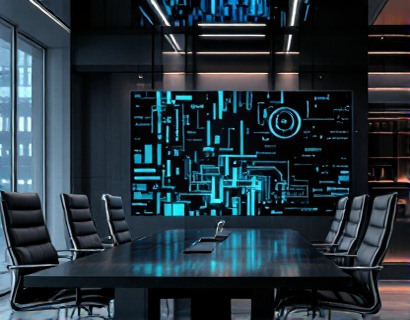Streamlining Architecture Firm Management: Embracing Innovative Software Solutions
In the dynamic and intricate world of architecture firm management, the need for efficient and innovative software solutions has never been more critical. As architecture firms strive to balance creative excellence with robust business operations, the integration of advanced technology can significantly enhance overall performance and user experience. This article delves into the transformative impact of innovative software solutions designed to streamline management, optimize project workflows, and elevate the user experience within architecture firms.
The Challenge of Traditional Management Practices
Traditionally, architecture firms have relied on manual processes and disparate tools to manage projects, resources, and client interactions. These methods, while familiar, often lead to inefficiencies, miscommunications, and a significant burden on staff. The complexity of managing multiple projects simultaneously, coordinating with clients and stakeholders, and ensuring that all team members are aligned can be overwhelming. Moreover, the lack of real-time visibility into project statuses and resource utilization can result in delays, cost overruns, and dissatisfied clients.
The Role of Innovative Software Solutions
Innovative software solutions are redefining the landscape of architecture firm management by addressing these challenges head-on. These platforms are designed to integrate various aspects of firm operations into a cohesive and user-friendly environment. By leveraging cutting-edge technologies such as cloud computing, artificial intelligence, and data analytics, these solutions offer a comprehensive approach to managing projects, resources, and client relationships.
Enhanced Project Management
One of the most significant benefits of adopting innovative software is the enhancement of project management capabilities. These platforms provide robust tools for project planning, scheduling, and tracking. Architects and project managers can create detailed project timelines, assign tasks, set milestones, and monitor progress in real-time. This level of visibility ensures that all team members are aware of their responsibilities and deadlines, reducing the risk of delays and miscommunications.
Moreover, these tools often include features for resource allocation and management. By automatically assigning resources based on availability and expertise, firms can optimize their workforce and avoid bottlenecks. The software can also generate reports and dashboards that offer insights into project performance, helping managers make data-driven decisions.
Improved Collaboration and Communication
Effective collaboration and communication are the cornerstones of successful architecture projects. Innovative software solutions facilitate seamless interaction among team members, clients, and stakeholders. Integrated communication tools such as chat, video conferencing, and document sharing ensure that everyone is on the same page, regardless of their physical location. This is particularly beneficial for firms with remote workers or multiple office locations.
Furthermore, these platforms often include collaboration features that allow for real-time editing and feedback on design documents. This not only accelerates the design process but also ensures that all stakeholders can provide input at the appropriate stages, leading to better-informed decisions and higher client satisfaction.
Client Relationship Management
Maintaining strong client relationships is crucial for the success of any architecture firm. Innovative software solutions offer powerful client relationship management (CRM) tools that help firms manage client interactions more effectively. These tools enable firms to store and organize client information, track communication history, and manage project handovers seamlessly.
By having a centralized repository of client data, firms can provide a more personalized and responsive service. Automated reminders and notifications ensure that important client interactions are not missed, and follow-up tasks are completed promptly. This level of organization and efficiency can significantly enhance client satisfaction and loyalty.
User Experience and Accessibility
The user experience (UX) of software solutions is a critical factor in their adoption and effectiveness. Innovative platforms are designed with a user-centric approach, ensuring that they are intuitive, accessible, and easy to navigate. This is particularly important for architecture firms where users may have varying levels of technical expertise.
Modern software solutions often feature clean, modern interfaces that reduce the learning curve and increase productivity. Mobile compatibility is another key aspect, allowing team members to access important information and perform tasks on-the-go. This flexibility is essential in today’s fast-paced business environment.
Data Security and Compliance
With the increasing amount of sensitive data being handled by architecture firms, data security and compliance have become paramount. Innovative software solutions prioritize security by implementing robust encryption, access controls, and regular security audits. These measures ensure that client data and firm information are protected from unauthorized access and breaches.
Additionally, these platforms are designed to comply with industry standards and regulations, such as GDPR and HIPAA, providing firms with peace of mind and reducing the risk of legal issues.
Case Studies and Success Stories
To illustrate the transformative impact of innovative software solutions, let’s examine a few case studies from architecture firms that have successfully integrated these tools into their operations.
Case Study 1: Urban Design Studio
Urban Design Studio, a mid-sized firm specializing in sustainable urban development, faced challenges in managing multiple projects with tight deadlines and large teams. By adopting a comprehensive project management software, they were able to centralize project data, streamline communication, and enhance collaboration. The result was a 30% reduction in project delivery time and a significant improvement in client satisfaction scores.
Case Study 2: Architectural Solutions Group
Architectural Solutions Group, a large firm with multiple offices, struggled with inconsistent workflows and poor resource utilization. Implementing an integrated project management and CRM platform helped them standardize processes, optimize resource allocation, and improve overall efficiency. The firm reported a 25% increase in project profitability and a 40% reduction in operational costs.
Future Trends in Architecture Firm Management Software
The landscape of architecture firm management software is continually evolving, driven by advancements in technology and changing industry needs. Some of the key trends to watch include:
- Artificial Intelligence and Machine Learning: These technologies are being integrated into software solutions to automate routine tasks, provide predictive analytics, and offer intelligent recommendations. AI can help firms anticipate potential issues, optimize workflows, and enhance decision-making.
- Internet of Things (IoT): IoT devices can be used to monitor construction sites in real-time, providing valuable data on equipment usage, environmental conditions, and safety compliance. This data can be integrated into project management platforms to ensure more informed and proactive management.
- Blockchain: Blockchain technology offers the potential for secure and transparent transaction management, contract execution, and supply chain tracking. This can enhance trust and efficiency in business operations.
As these technologies mature and become more accessible, architecture firms can expect even more powerful and innovative tools to become available, further transforming the way they operate.
Conclusion
In conclusion, the integration of innovative software solutions is not just a trend but a necessity for architecture firms looking to stay competitive and efficient in today’s fast-paced market. By streamlining management processes, optimizing project workflows, and enhancing user experience, these tools enable architects to focus on their creative vision while ensuring robust business operations. As the industry continues to evolve, embracing these technologies will be key to success.










































